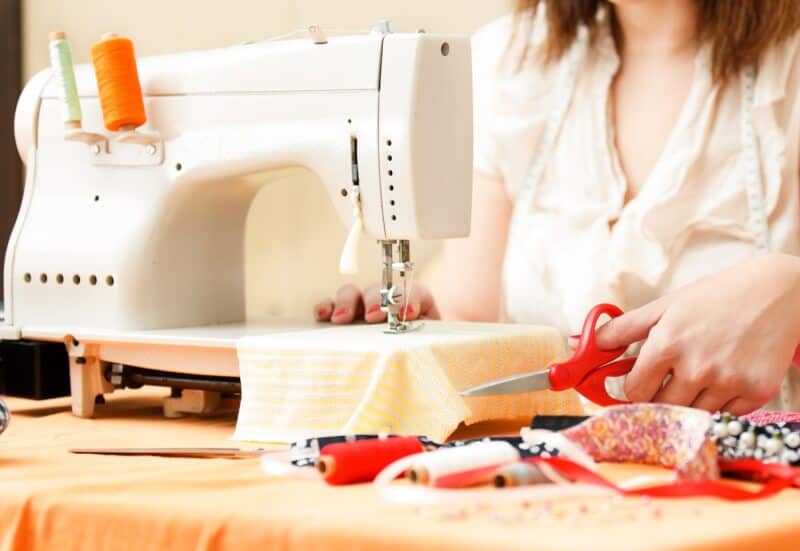There are various sewing machine types out there. The two major types are domestic sewing machines, which are used for home use, and industrial sewing machines, which are used for clothing production and factories alike. Here in this article, we make a list of types of sewing machines based on these two types.
Types of Sewing Machines for Domestic Use
First, let’s talk about the domestic sewing machine types. These sewing machines are ideal if you are planning to sew several times a week with a low amount of work.
Some examples of domestic sewing machines are mechanical, electronic, automatic or, embroidery sewing machines, overlock, portable, and quilting sewing machines. We explain each of them briefly below.
1. Mechanical

The mechanical sewing machines are the most basic of all sewing machines. These sewing machines are either operated using a treadle or hand-operated.
The best thing about mechanical sewing machines is that they don’t need electricity. These machines are made of metal and usually attached to a wooden table. They are built to last.
Keep in mind that this type of sewing machine can only do straight stitching.
2. Electronic
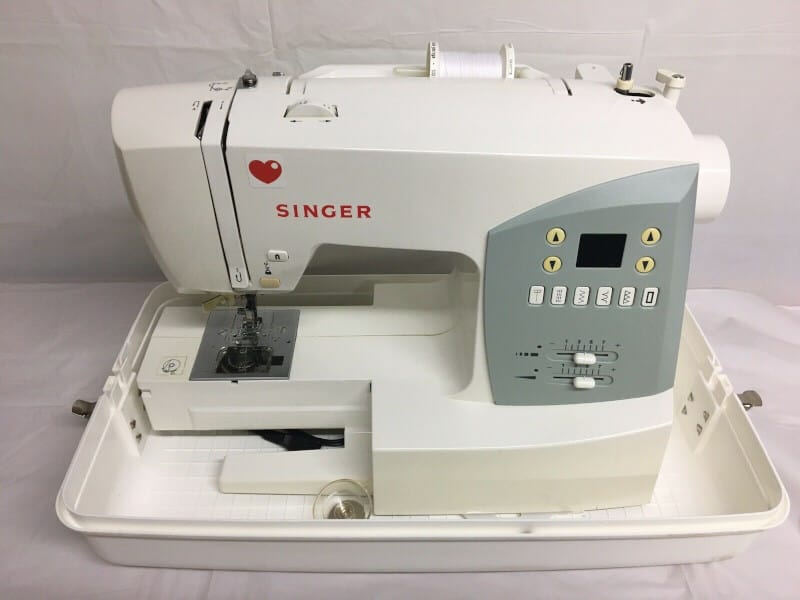
The next type of domestic sewing machine is the electronic sewing machines. Unlike the mechanical one, this sewing machine offers more options as well as the advantage of being electronically operated.
With electronic sewing machines, you can do different stitches with different stitch lengths. For example, straight stitch, decorative stitches, and even zigzag. The variations depend on the machine itself.
3. Automatic/Computerized

Automatic or computerized sewing machines are among types of sewing machines that offer multitudes of features and functions.
For example, automatic needle threading, embroidery stitches, various stitch lengths, tension controls, and an LCD screen display, just to name a few.
So if you are looking forward to doing various sewing works, these machines will be a good choice. They are, however, among the more expensive machines.
4. Embroidery
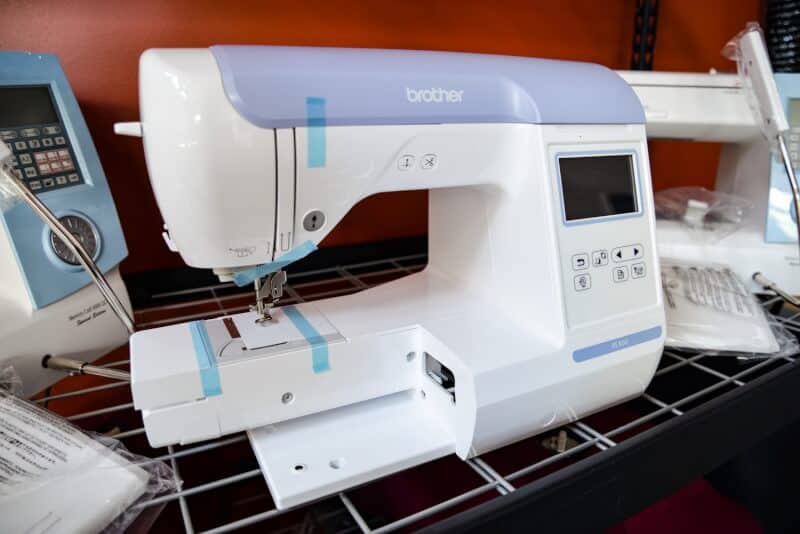
If you are planning to do embroidery, your best option is the embroidery machine. These types of machines are designed to make embroideries.
Usually, the machine comes with built-in designs as well as a memory facility, which allows you to add your own embroidery designs.
Similar to computerized sewing machines, these machines are on the higher end of the price range. Some of them can are in the range of thousands of dollars.
5. Overlocking

This one is a rather new addition to types of sewing machines. The overlocking sewing machine is able to not only sew but also trim as well as oversew seams’ edges.
The machine can also be used to neat the edges, creating a professional look. Because of these, these machines are ideal for sewing fleece and stretch knits for active sportswear.
Keep in mind this type of machine can be tricky to thread.
6. Portable

The next types of sewing machines are portable sewing machines. These sewing machines are small enough they can be brought just about anywhere.
Their portability does come with a cost, however. First, they are not sturdy enough. And second, they can only do simple sewing works.
Due to these, they are ideal for mending and small projects. Don’t choose these machines if you are working on extended sewing and larger projects.
7. Quilting

The last one is quilting machines. These are sewing machines designed to make large quilts. So if you plan to make large quilts, these are the machines you want to check out.
Quilting machines are able to sew through thick fabric. They also have a longer arm, which allows larger-sized fabrics to pass through them.
In case you are interested, some brands offer sewing machines that can be used for both general sewing and quilting.
Types of Sewing Machines for Industrial Use
The next types are industrial sewing machines. These sewing machines are ideal if you are looking forward to sewing every day with a high amount of work.
The most common industrial sewing machine types are the flat bed, post bed, cylinder bed, free arm, and feed off the arm sewing machines. We explain these sewing machines briefly below.
8. Flatbed

The first type of industrial sewing machine is the flat bed. The flat bed sewing machines are typically used in factories to sew flat pieces of fabric together as well as for other simple sewing projects.
These sewing machines come with an extended needle arm, similar to domestic sewing machines.
If you are looking for a sewing machine for simple sewing projects, these types of sewing machines are worth checking out.
9. Post bed
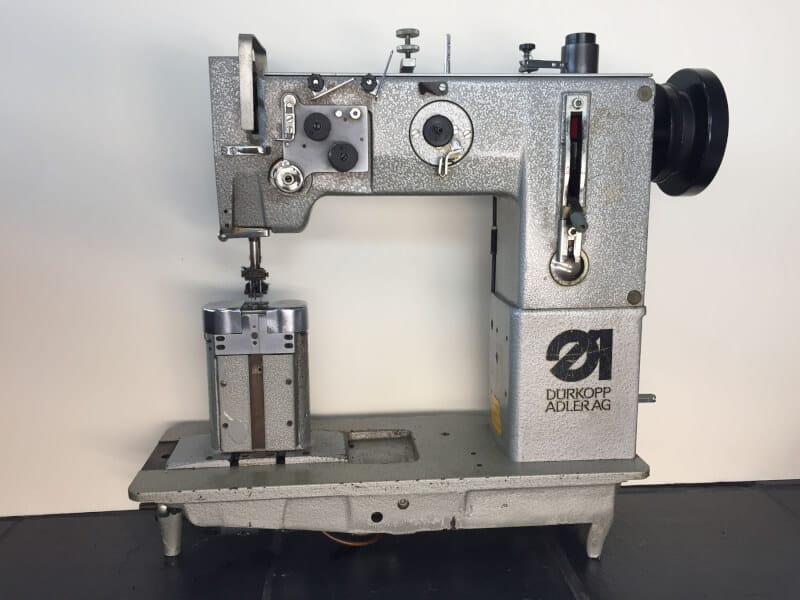
The post bed machines are sewing machines used to stitch gloves, boots, hats, bags, and purses. They are often used to attach emblems as well.
These sewing machines consist of bobbins, feed dogs, and loopers, placed on a raised vertical column (about 10 to 45 cm in height) just above the machine’s flat base.
The machines are fitted on a sewing table. They also have an external motor.
10. Cylinder bed
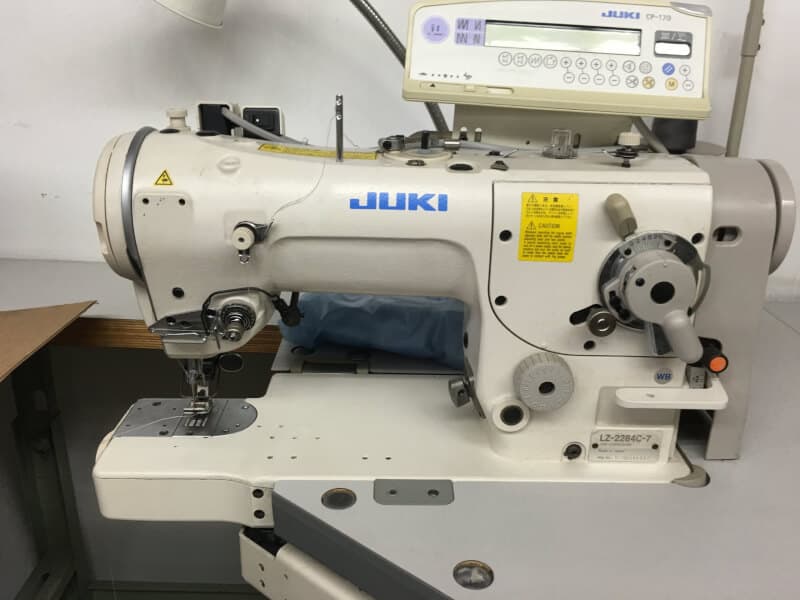
These types of sewing machines are the opposite of the flat bed sewing machines. While the flat bed machines have a flat base, the cylinder bed machines have a horizontal cylindrical column.
The cylinder is about 5 to 16 cm in width. It is used to sew cylindrical pieces. For example, cuffs, sleeves, and even rather bulky items such as saddles and shoes.
11. Free arm
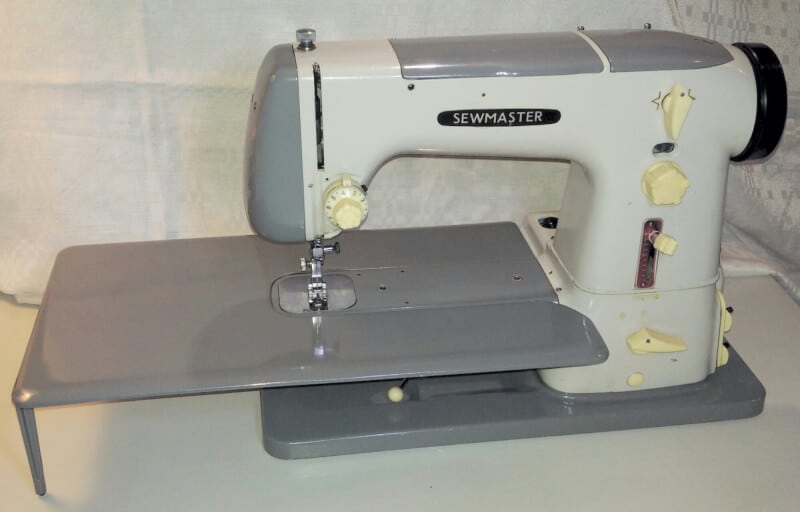
Free arm sewing machines are used to make pant hems or sleeves. As the name suggests, the machine gives way to a free arm, thanks to its detachable flat bed arm.
Compared to a flat bed, a free arm provides a narrower working surface. However, underneath the free arm there is ample space, separating the working surface from the machine.
So if you are looking for a sewing machine that offers a free arm, this is the one you want.
12. Feed off the arm

The last one is the feed off the arm sewing machines. These are the sewing machines used for sewing both light- and heavy-weight materials.
These machines produce 2 to 3 rows of parallel, chain stitching rows. They usually use loopers and 2 to 3 needles with the sewing process may involving four threads.
Which types of sewing machines suit you best? If you plan to sew often with a high amount of work, then the industrial sewing machine. If you plan to use it less frequently, then the domestic sewing machine.
